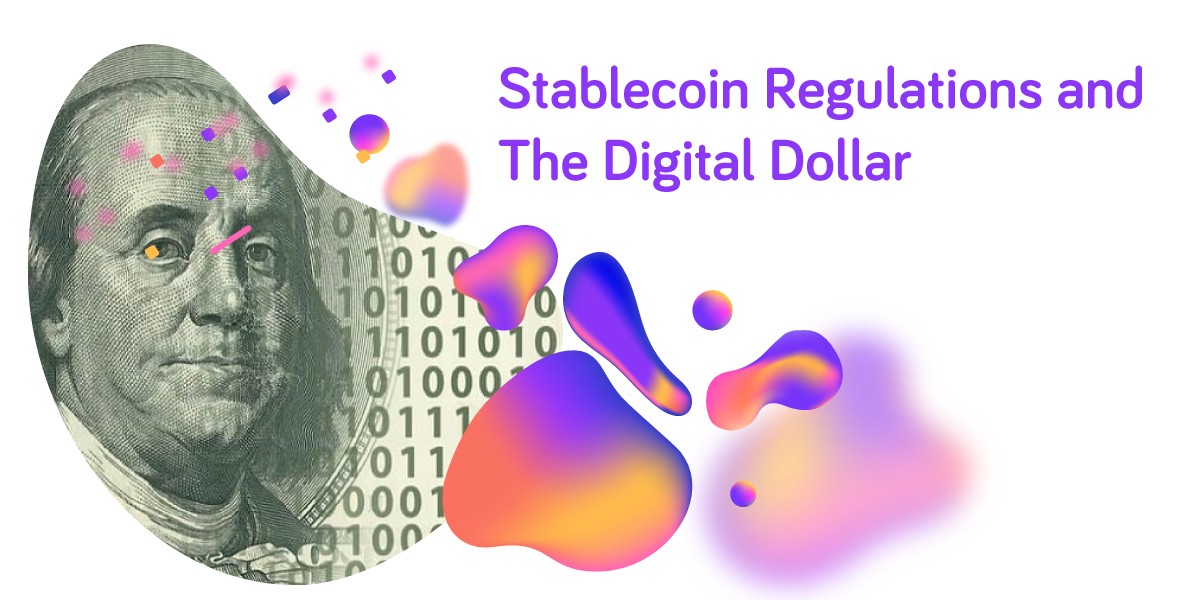Stablecoins are a cryptocurrency class that offers price stability because this kind of currency is covered by a reserve asset, meaning physical goods from the real world.
The value of one stablecoin is given by its external reference — whether it’s USD or any other FIAT currency, gold, or other commodities.
The following are some examples:
· USDT
· USDC
· DAI
For example, Bitcoin has remained the most popular cryptocurrency for the crypto industry’s entire lifespan. Still, its volatility is too high for some investors that don’t want to have exposure at all times (such as Bear Market corrections). This is where stablecoins come in: they preserve one’s portfolio value because of their lack of volatility. In essence, a stablecoin should act as a medium of exchange and a means to store value over a more extended period.
What are the problems with stablecoins?
Tether, or USDT, is the third-largest cryptocurrency globally by market capitalization, worth over $80 Billion. One USDT is always equal to $1. Even if it’s the most traded cryptocurrency in the world, there is a lot of derogatory news about USDT, making it one controversial currency. The main reason for this was speculators that claimed Tether is not 100% backed by the American Dollar.
The problems began in 2017 when their security system was compromised, and $31 million worth of USDT was stolen. One year later, the audit that had to verify Tether’s reserves to ensure that coins were backed never happened; thus, Tether stated that it was separating from the respective audit firm.
After this, a subpoena was issued by US regulators. Although, at the same time, Tether noted for years that real American Dollars back each USDT, it was discovered that this affirmation is false and misleading. For example, between June and September 2017, there was never more than $61,5 Million in Tether’s Treasury, even if there was 442 Million Tether in circulation at the time.
What about regulating stablecoins?
Stablecoins such as Tether grows fast enough to attract regulations and tend to be the first cryptocurrencies to be regulated by governments. Presidents Working Group on Financial Markets and Federal Deposit Insurance Corporation and Office of the Comptroller of the Currency issued a report regarding stablecoins in November 2021. This report recommends diverse regulations for:
· companies that issue stablecoins
· electronic wallet suppliers
· other companies involved in stablecoin transactions
Keeping in mind the earlier information about Tether’s Treasury, one of the recommendations is that Congress should ask stablecoin issuers to act as private banks insured by Federal Deposit Insurance Corporation and prohibit other private companies from issuing stablecoins. At the same time, these private companies would be transformed into financial institutions and be subject to risk management standards established by the Federal Reserve, Securities and Exchange Commission, or Commodity Futures Trading Commission — depending on the main regulatory body.
Application of these standards would diminish ever further possible financial or digital risk, making stablecoins even more stable, supported by the central economy, and making cryptocurrencies more valuable and trustworthy, meanwhile, sacrificing the idea of decentralization that’s been behind crypto since its inception.
What are the plans for 2022?
Joe Biden, the President of The United States, has signed an executive order last week that calls on federal government agencies to hurry efforts to assess the benefits and risks associated with cryptocurrencies.
Depending on results, the executive order will be followed by measures meant to protect consumers and investors for their financial stability and inclusion, and at the same time control illegal activity, responsible innovation, and competitiveness of The United States on a global scale. Also, the US President wants regulators to ensure sufficient protection against any financial risk that digital assets could possess. Implementing such measures could stop internet scams in which many new investors fall and lose their money once and for all.
In addition to all measures of control over cryptocurrencies, the USA is considering the creation of a Digital Dollar — which is just a digital coin, not a cryptocurrency because not all digital currencies rely on Blockchain Technology. Therefore, it is considered that this move would lead to a decrease in stablecoins’ utility. However, it remains to be seen if the Digital American Dollar will compete with stablecoins, given that these currencies work using different technologies and address another audience.
Want to be up-to-date at all times on the latest crypto developments? Our Medium blog covers all the topics you’re interested in. For an easy and secure trading experience, join Your Friendly Crypto Exchange on the journey towards your financial freedom.
Disclaimer: The content of this article is not investment advice and does not constitute an offer or solicitation to offer or recommendation of any investment product. It is for general purposes only and does not take into account your individual needs, investment objectives and specific financial and fiscal circumstances.
Although the material contained in this article was prepared based on information from public and private sources that IXFI believes to be reliable, no representation, warranty or undertaking, stated or implied, is given as to the accuracy of the information contained herein, and IXFI expressly disclaims any liability for the accuracy and completeness of the information contained in this article.
Investment involves risk; any ideas or strategies discussed herein should therefore not be undertaken by any individual without prior consultation with a financial professional for the purpose of assessing whether the ideas or strategies that are discussed are suitable to you based on your own personal financial and fiscal objectives, needs and risk tolerance. IXFI expressly disclaims any liability or loss incurred by any person who acts on the information, ideas or strategies discussed herein.


